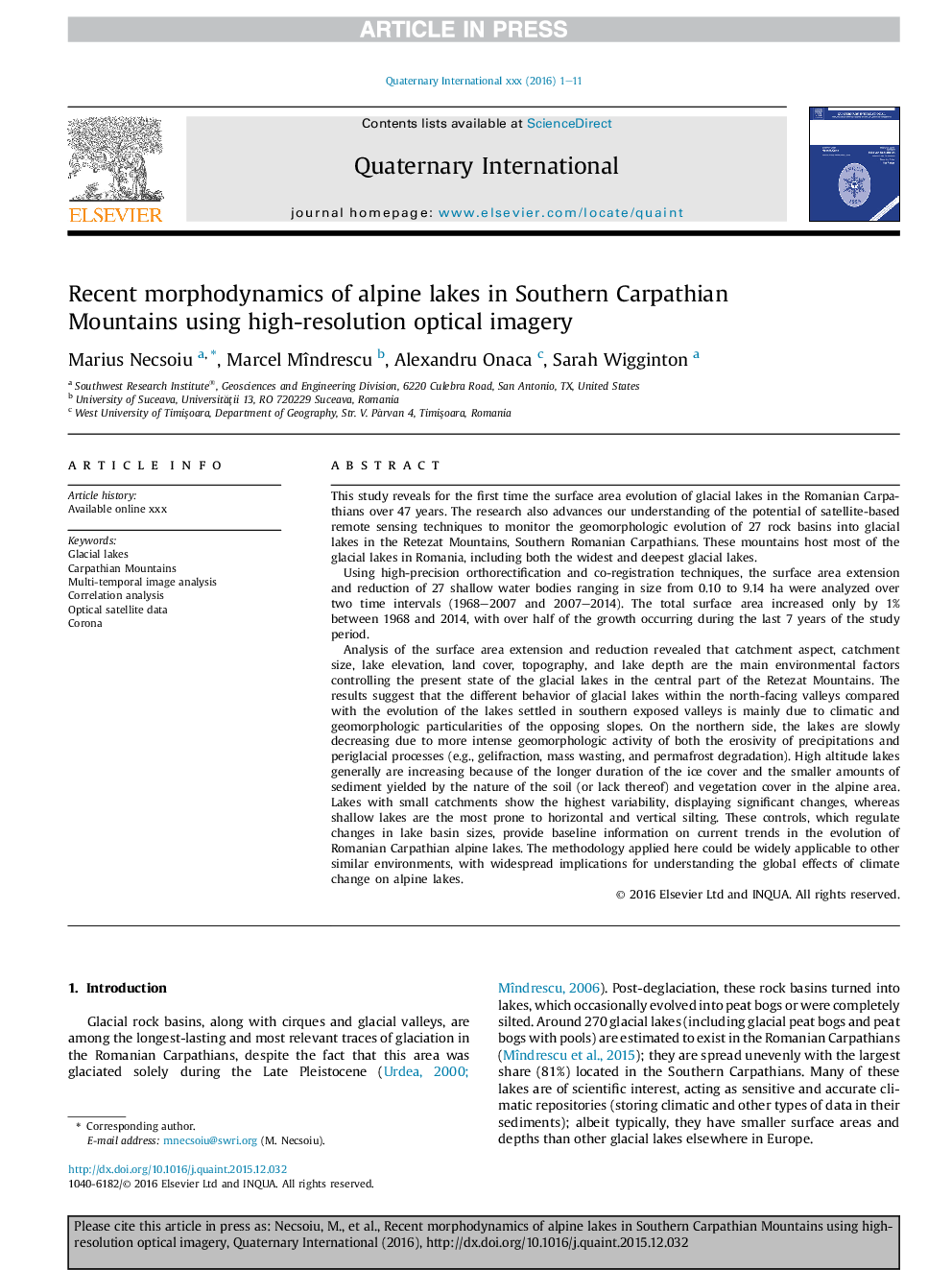| Article ID | Journal | Published Year | Pages | File Type |
|---|---|---|---|---|
| 5114161 | Quaternary International | 2016 | 11 Pages |
Abstract
Analysis of the surface area extension and reduction revealed that catchment aspect, catchment size, lake elevation, land cover, topography, and lake depth are the main environmental factors controlling the present state of the glacial lakes in the central part of the Retezat Mountains. The results suggest that the different behavior of glacial lakes within the north-facing valleys compared with the evolution of the lakes settled in southern exposed valleys is mainly due to climatic and geomorphologic particularities of the opposing slopes. On the northern side, the lakes are slowly decreasing due to more intense geomorphologic activity of both the erosivity of precipitations and periglacial processes (e.g., gelifraction, mass wasting, and permafrost degradation). High altitude lakes generally are increasing because of the longer duration of the ice cover and the smaller amounts of sediment yielded by the nature of the soil (or lack thereof) and vegetation cover in the alpine area. Lakes with small catchments show the highest variability, displaying significant changes, whereas shallow lakes are the most prone to horizontal and vertical silting. These controls, which regulate changes in lake basin sizes, provide baseline information on current trends in the evolution of Romanian Carpathian alpine lakes. The methodology applied here could be widely applicable to other similar environments, with widespread implications for understanding the global effects of climate change on alpine lakes.
Related Topics
Physical Sciences and Engineering
Earth and Planetary Sciences
Geology
Authors
Marius Necsoiu, Marcel Mîndrescu, Alexandru Onaca, Sarah Wigginton,
